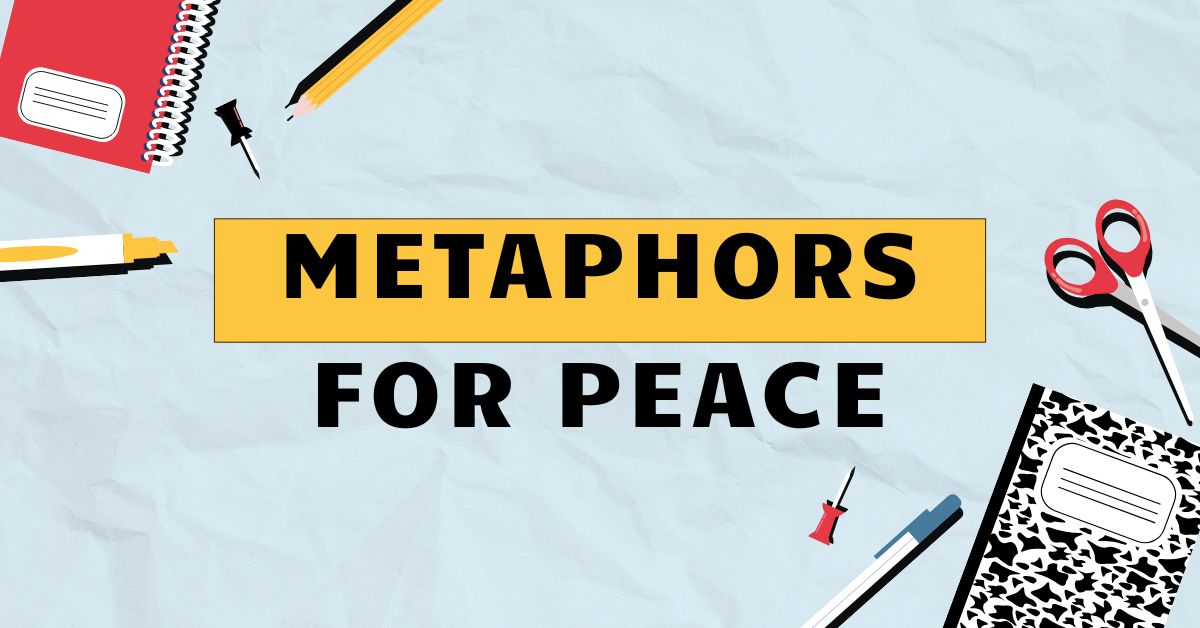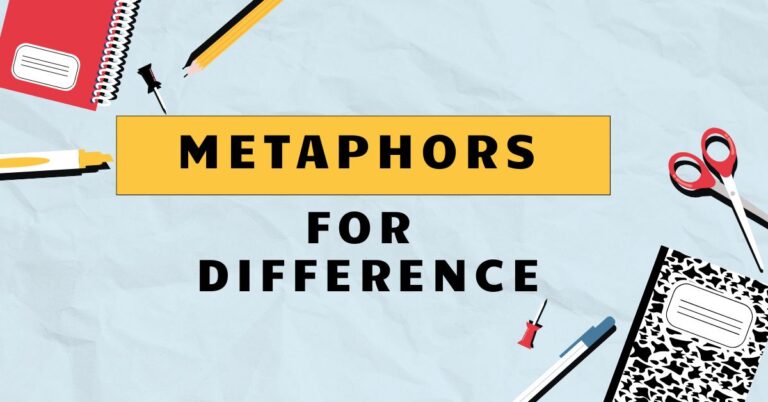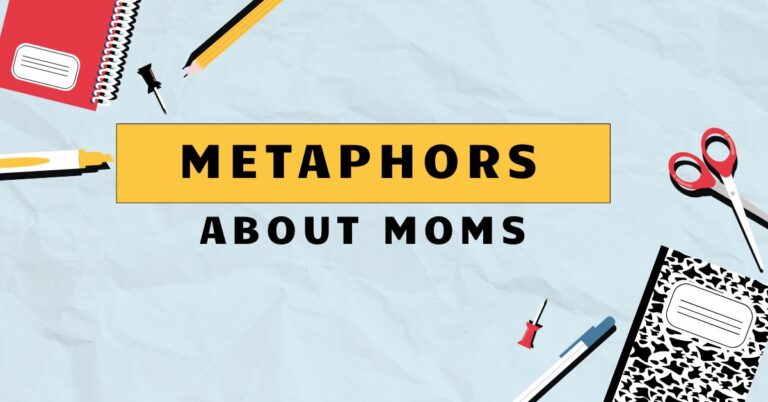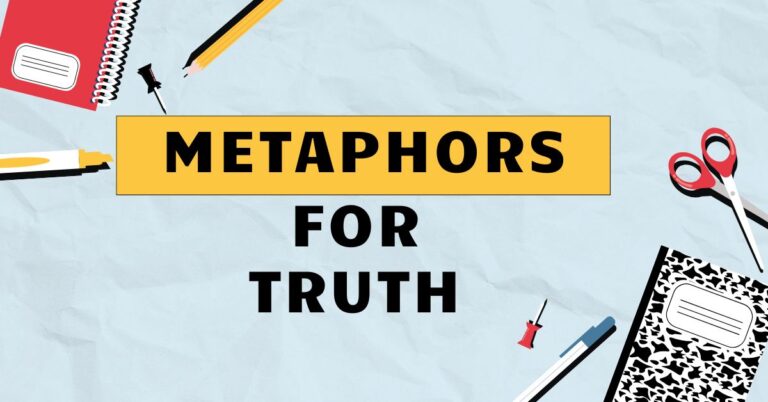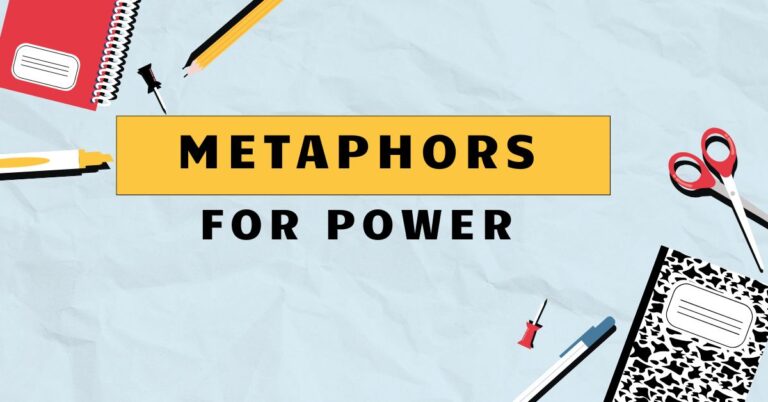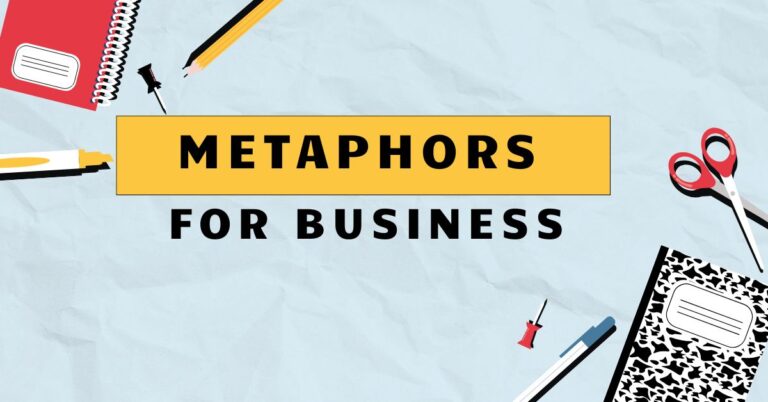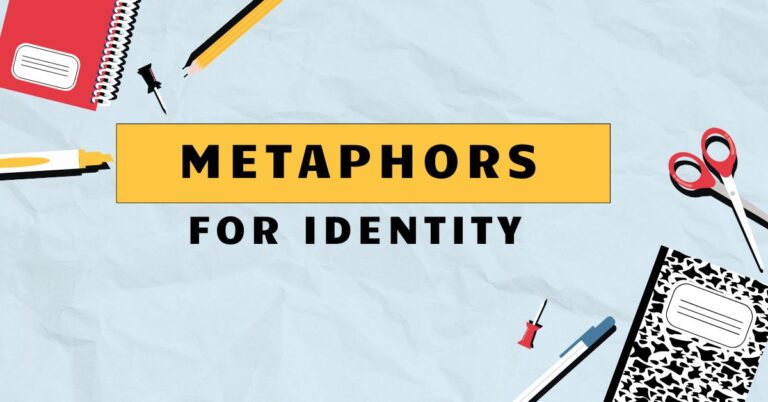39 Metaphors for Peace: Understanding Figurative Language
Metaphors are powerful tools in language, allowing us to understand abstract concepts like peace through more concrete terms. By exploring metaphors for peace, we gain deeper insights into its multifaceted nature and the various ways it can be perceived and achieved.
This understanding is crucial for effective communication, persuasive writing, and critical analysis of texts. This article will benefit students, writers, and anyone interested in enhancing their understanding and use of figurative language, particularly in the context of peace and conflict resolution.
Mastering this skill will allow you to express complex ideas with greater nuance and impact, fostering a more profound appreciation for the art of language.
Table of Contents
- Introduction
- Definition of Metaphor
- Structural Breakdown of Metaphors
- Types of Peace Metaphors
- Examples of Metaphors for Peace
- Usage Rules for Metaphors
- Common Mistakes with Metaphors
- Practice Exercises
- Advanced Topics in Metaphorical Analysis
- Frequently Asked Questions
- Conclusion
Definition of Metaphor
Ametaphoris a figure of speech that directly compares two unlike things without using “like” or “as.” It asserts that one thingisanother, implying a shared quality or characteristic. Metaphors are essential for conveying complex ideas, evoking emotions, and adding depth to language.
They enable us to understand abstract concepts by relating them to more tangible or familiar experiences.
Metaphors function by transferring qualities from one concept (thesource domain) to another (thetarget domain). In the context of peace, the target domain is “peace,” while the source domain can be various things like a calm sea, a gentle breeze, or a blooming garden.
The effectiveness of a metaphor lies in the strength and relevance of the connection between the source and target domains.
Metaphors are found in various contexts, including literature, poetry, political speeches, and everyday conversation. They are powerful tools for persuasion, allowing speakers and writers to shape perceptions and influence audiences.
Understanding metaphors is crucial for interpreting texts, analyzing arguments, and enhancing one’s own communication skills.
Structural Breakdown of Metaphors
A metaphor consists of two main elements: thetenorand thevehicle. The tenor is the subject to which metaphorical characteristics are attributed (the target domain).
The vehicle is the object whose characteristics are borrowed (the source domain). The ground is the shared characteristics between the tenor and the vehicle.
For instance, in the metaphor “Peace is a fragile flower,” “peace” is the tenor, “fragile flower” is the vehicle, and the shared characteristics include qualities like delicacy, vulnerability, and the need for careful nurturing. Understanding these components helps in analyzing and interpreting metaphors effectively.
The relationship between the tenor and the vehicle is not always explicitly stated. Sometimes, the tenor is implied, and the vehicle is used to evoke a particular feeling or idea.
The context in which the metaphor is used plays a crucial role in determining its meaning and impact.
Types of Peace Metaphors
Metaphors for peace can be categorized based on the source domain they draw from. Here are some common categories:
Nature Metaphors
These metaphors use elements of nature to represent peace. Examples include “peace is a sunrise,” “peace is a calm lake,” and “peace is a blossoming tree.” These metaphors often emphasize the beauty, tranquility, and growth associated with peace.
Relational Metaphors
These metaphors describe peace in terms of relationships and interactions. Examples include “peace is a bridge,” “peace is a handshake,” and “peace is a shared table.” These metaphors highlight the importance of connection, communication, and cooperation in achieving peace.
Object Metaphors
These metaphors use objects to symbolize peace. Examples include “peace is a key,” “peace is a shield,” and “peace is a white flag.” These metaphors often represent the tools, protection, or surrender associated with peace.
Emotional Metaphors
These metaphors use emotional states to describe peace. Examples include “peace is contentment,” “peace is joy,” and “peace is serenity.” These metaphors emphasize the inner feelings and experiences that accompany peace.
Abstract Metaphors
These metaphors use abstract concepts to represent peace. Examples include “peace is justice,” “peace is understanding,” and “peace is harmony.” These metaphors highlight the underlying principles and values that support peace.
Examples of Metaphors for Peace
Here are some examples of metaphors for peace, categorized for clarity and understanding:
Nature Metaphors Examples
Nature provides a rich source of imagery for peace metaphors. The following table presents various examples:
| Metaphor | Explanation |
|---|---|
| Peace is a sunrise. | Peace is a new beginning, full of hope and promise. |
| Peace is a calm lake. | Peace is tranquility and serenity, free from conflict. |
| Peace is a blossoming tree. | Peace is growth, development, and flourishing. |
| Peace is a gentle breeze. | Peace is a soothing and calming influence. |
| Peace is fertile ground. | Peace is the foundation for prosperity and well-being. |
| Peace is a clear sky. | Peace is clarity and the absence of turmoil. |
| Peace is a flowing river. | Peace is continuous and natural progress. |
| Peace is a sturdy mountain. | Peace is strength, stability, and resilience. |
| Peace is a quiet forest. | Peace is a sanctuary, a place of refuge. |
| Peace is a blooming garden. | Peace is beauty, harmony, and abundance. |
| Peace is the hush of twilight. | Peace is the quiet ending of conflict. |
| Peace is the warmth of the sun. | Peace provides comfort and nurturance. |
| Peace is the gentle rain. | Peace cleanses and renews. |
| Peace is the rustling leaves. | Peace is a gentle, constant presence. |
| Peace is the deep blue sea. | Peace is vast and encompassing. |
| Peace is the soaring eagle. | Peace represents freedom and perspective. |
| Peace is the blooming desert after rain. | Peace is unexpected and transformative. |
| Peace is the first snow of winter. | Peace is pure and pristine. |
| Peace is the dawn chorus of birds. | Peace is harmonious and joyful. |
| Peace is the steady rhythm of the tides. | Peace is reliable and consistent. |
| Peace is the shelter of a tree. | Peace is protection and security. |
| Peace is the vibrant colors of a rainbow. | Peace is beautiful and diverse. |
| Peace is the quiet strength of an oak. | Peace is enduring and powerful. |
Relational Metaphors Examples
Relationships are central to the concept of peace, and these metaphors reflect that:
| Metaphor | Explanation |
|---|---|
| Peace is a bridge. | Peace connects people and cultures, overcoming divisions. |
| Peace is a handshake. | Peace is agreement, reconciliation, and trust. |
| Peace is a shared table. | Peace is equality, inclusivity, and common ground. |
| Peace is a conversation. | Peace requires dialogue, understanding, and empathy. |
| Peace is a warm embrace. | Peace is affection, acceptance, and comfort. |
| Peace is a helping hand. | Peace is support, compassion, and solidarity. |
| Peace is a shared song. | Peace is harmony, unity, and collective expression. |
| Peace is a common goal. | Peace provides a shared purpose and direction. |
| Peace is a woven tapestry. | Peace is interconnected and interdependent. |
| Peace is a circle of friends. | Peace is community, belonging, and mutual support. |
| Peace is a partnership for progress. | Peace is cooperation and advancement together. |
| Peace is a family united. | Peace means harmony and love within a group. |
| Peace is a community garden. | Peace is a shared effort that yields abundance. |
| Peace is a meeting of minds. | Peace is understanding and agreement through discussion. |
| Peace is a bond of trust. | Peace is a strong connection built on reliability. |
| Peace is a network of support. | Peace is interconnected assistance and care. |
| Peace is a collective dream. | Peace is a shared vision of a better future. |
| Peace is a united front. | Peace is solidarity against adversity. |
| Peace is a collaborative effort. | Peace requires working together towards a common aim. |
| Peace is a symphony of voices. | Peace is harmonious cooperation and expression. |
| Peace is a common thread. | Peace connects diverse people and ideas. |
| Peace is a shared journey. | Peace requires traveling together towards a better future. |
Object Metaphors Examples
Objects can symbolize different aspects of peace, providing concrete representations of abstract ideas:
| Metaphor | Explanation |
|---|---|
| Peace is a key. | Peace unlocks opportunities, solutions, and progress. |
| Peace is a shield. | Peace protects from harm, threat, and violence. |
| Peace is a white flag. | Peace signifies surrender, truce, and negotiation. |
| Peace is a compass. | Peace provides direction, guidance, and purpose. |
| Peace is a foundation. | Peace is the basis for stability, security, and growth. |
| Peace is a beacon. | Peace provides hope, light, and inspiration. |
| Peace is a puzzle. | Peace requires solving complex problems and finding solutions. |
| Peace is a mirror. | Peace reflects understanding, empathy, and self-awareness. |
| Peace is a book. | Peace contains wisdom, knowledge, and stories of reconciliation. |
| Peace is a song. | Peace expresses joy, harmony, and unity. |
| Peace is a blanket. | Peace provides comfort, warmth, and security. |
| Peace is a bridge. | Peace connects people across divides. |
| Peace is a lamp. | Peace illuminates the path forward. |
| Peace is a loom. | Peace weaves together different threads of society. |
| Peace is a cornerstone. | Peace is essential for a stable society. |
| Peace is a vessel. | Peace contains and protects shared values. |
| Peace is a map. | Peace guides us towards a better future. |
| Peace is a ladder. | Peace helps us climb towards progress and understanding. |
| Peace is a garden. | Peace requires cultivation and care to flourish. |
| Peace is a well. | Peace provides nourishment and sustains life. |
Emotional Metaphors Examples
These metaphors capture the emotional essence of peace:
| Metaphor | Explanation |
|---|---|
| Peace is contentment. | Peace is a state of satisfaction, happiness, and fulfillment. |
| Peace is joy. | Peace is happiness, delight, and celebration. |
| Peace is serenity. | Peace is calmness, tranquility, and inner peace. |
| Peace is relief. | Peace is freedom from stress, anxiety, and burden. |
| Peace is hope. | Peace is optimism, expectation, and possibility. |
| Peace is love. | Peace is affection, compassion, and empathy. |
| Peace is understanding. | Peace is insight, knowledge, and awareness. |
| Peace is forgiveness. | Peace is letting go of anger, resentment, and bitterness. |
| Peace is acceptance. | Peace is acknowledging and embracing differences. |
| Peace is empathy. | Peace is understanding and sharing the feelings of others. |
| Peace is compassion. | Peace is caring and concern for others’ well-being. |
| Peace is gratitude. | Peace is appreciation and thankfulness. |
| Peace is trust. | Peace is reliance and confidence in others. |
| Peace is security. | Peace is safety and freedom from fear. |
| Peace is harmony. | Peace is balance and agreement. |
| Peace is fulfillment. | Peace is satisfaction of needs and desires. |
| Peace is well-being. | Peace is a state of health and happiness. |
| Peace is bliss. | Peace is perfect happiness and joy. |
Usage Rules for Metaphors
Using metaphors effectively requires understanding certain rules and guidelines:
- Relevance: The connection between the tenor and vehicle should be clear and relevant.
- Originality: Avoid clichés and overused metaphors. Strive for fresh and creative comparisons.
- Consistency: Maintain consistency within a metaphor. Avoid mixing metaphors that create contradictory images.
- Clarity: Ensure the metaphor enhances understanding rather than obscuring it.
- Appropriateness: Choose metaphors that are appropriate for the context and audience.
A strong metaphor resonates with the reader or listener, creating a vivid and memorable image. Overused or inappropriate metaphors can weaken the impact of your message.
Common Mistakes with Metaphors
Here are some common mistakes to avoid when using metaphors:
| Mistake | Incorrect Example | Correct Example |
|---|---|---|
| Mixed Metaphor | “Let’s nip it in the bud before it snowballs into a raging inferno.” | “Let’s nip it in the bud before it becomes a bigger problem.” |
| Cliché Metaphor | “Peace is a light at the end of the tunnel.” | “Peace is a carefully constructed bridge across a chasm.” |
| Inappropriate Metaphor | “Peace is a nuclear bomb.” | “Peace is a carefully negotiated treaty.” |
| Unclear Metaphor | “Peace is a thing.” | “Peace is a shared understanding between nations.” |
| Overextended Metaphor | “Peace is a fragile flower that needs to be watered, pruned, and protected from the harsh sun and strong winds, lest it wither and die, leaving us all in darkness.” | “Peace is a fragile flower that needs careful nurturing.” |
Avoiding these mistakes will ensure that your metaphors are effective and enhance your communication.
Practice Exercises
Test your understanding of metaphors for peace with these exercises:
Exercise 1: Identifying Metaphors
Identify the metaphors in the following sentences:
| Question | Answer |
|---|---|
| 1. Peace is the cornerstone of society. | Peace is the cornerstone. |
| 2. Dialogue is the bridge to understanding. | Dialogue is the bridge. |
| 3. Forgiveness is the key that unlocks the door to healing. | Forgiveness is the key. |
| 4. Hope is the beacon that guides us through darkness. | Hope is the beacon. |
| 5. Peace is a symphony of diverse voices. | Peace is a symphony. |
| 6. Peace is a fertile garden that needs constant care. | Peace is a fertile garden. |
| 7. Education is the ladder that helps us climb to understanding. | Education is the ladder. |
| 8. Love is the compass that guides us towards peace. | Love is the compass. |
| 9. Peace is the warm blanket of security. | Peace is the warm blanket. |
| 10. Unity is the strong rope that binds us together. | Unity is the strong rope. |
Exercise 2: Creating Metaphors
Create your own metaphors for peace using the following prompts:
| Prompt | Example Answer |
|---|---|
| 1. Peace is like… | Peace is like a quiet stream flowing through a peaceful valley. |
| 2. Peace is a… | Peace is a carefully woven tapestry of different cultures. |
| 3. Peace is the… | Peace is the gentle rain that nourishes a parched land. |
| 4. Peace can be described as… | Peace can be described as a shared table where everyone is welcome. |
| 5. Peace resembles… | Peace resembles a sturdy oak tree, weathering any storm. |
| 6. Peace is a pathway to… | Peace is a pathway to understanding and cooperation. |
| 7. Peace is a source of… | Peace is a source of hope for a better future. |
| 8. Peace is the absence of… | Peace is the absence of fear and violence. |
| 9. Peace is built on… | Peace is built on trust and mutual respect. |
| 10. Peace is achieved through… | Peace is achieved through dialogue and understanding. |
Exercise 3: Analyzing Metaphors
Analyze the following metaphors for peace by identifying the tenor, vehicle, and ground:
| Metaphor | Tenor | Vehicle | Ground |
|---|---|---|---|
| 1. Peace is a bridge connecting two shores. | Peace | Bridge | Connection, overcoming division |
| 2. Peace is a shield against the arrows of conflict. | Peace | Shield | Protection, defense |
| 3. Peace is a gentle breeze that soothes troubled hearts. | Peace | Gentle breeze | Calming, soothing |
| 4. Peace is a blooming garden, nurtured by understanding. | Peace | Blooming garden | Growth, beauty, care |
| 5. Peace is a sturdy foundation upon which to build a future. | Peace | Sturdy foundation | Stability, support |
| 6. Peace is a compass guiding us to a better world. | Peace | Compass | Direction, guidance |
| 7. Peace is a song that unites voices in harmony. | Peace | Song | Harmony, unity |
| 8. Peace is a warm embrace that melts away animosity. | Peace | Warm embrace | Affection, acceptance |
| 9. Peace is a clear mirror reflecting our shared humanity. | Peace | Clear mirror | Reflection, understanding |
| 10. Peace is a puzzle that we must solve together. | Peace | Puzzle | Complexity, collaboration |
Advanced Topics in Metaphorical Analysis
For advanced learners, exploring the following aspects can deepen your understanding of metaphors:
- Conceptual Metaphor Theory: This theory explores how metaphors shape our thinking and understanding of the world.
- Metaphorical Framing: This involves using metaphors to influence how people perceive and interpret events or issues.
- Cross-Cultural Metaphors: Analyzing how metaphors for peace vary across different cultures and languages.
- The Role of Metaphors in Conflict Resolution: Examining how metaphors can be used to promote understanding and facilitate dialogue in conflict situations.
These advanced topics provide a more nuanced and sophisticated understanding of the power and complexity of metaphors.
Frequently Asked Questions
- What is the difference between a metaphor and a simile?
A metaphor directly equates two unlike things, while a simile uses “like” or “as” to make a comparison. For example, “Peace is a river” is a metaphor, while “Peace is like a river” is a simile.
- Why are metaphors important in language?
Metaphors enhance understanding, evoke emotions, add depth, and make abstract concepts more accessible. They are powerful tools for communication and persuasion.
- How can I improve my use of metaphors?
Read widely, pay attention to the metaphors used by others, practice creating your own metaphors, and seek feedback on your writing.
- What is a mixed metaphor, and why should I avoid it?
A mixed metaphor combines two or more inconsistent metaphors, creating a confusing or nonsensical image. It should be avoided because it weakens the impact of your message and can make you appear unclear or illogical. An example of a mixed metaphor is “We need to grab the bull by the horns and swim upstream.” This combines the idiom of “grabbing the bull by the horns” with the idiom of “swimming upstream,” which don’t logically fit together.
- Are some metaphors better than others?
Yes. Effective metaphors are relevant, original, clear, and appropriate for the context and audience. Clichéd or confusing metaphors should be avoided.
- Can a metaphor be too complex?
Yes. A metaphor should enhance understanding, not obscure it. If a metaphor is too complex or convoluted, it may confuse the audience and detract from your message.
- How do cultural differences affect the interpretation of metaphors?
Metaphors are often rooted in cultural experiences and values. A metaphor that is meaningful in one culture may not be understood or appreciated in another. Therefore, it’s important to be aware of cultural differences when using metaphors.
- How can metaphors be used to promote peace?
Metaphors can be used to frame peace in positive and appealing ways, promote empathy and understanding, and facilitate dialogue between conflicting parties. They can help to create a shared vision of a peaceful future.
- What role do metaphors play in political discourse about peace?
Metaphors shape public perception and influence policy decisions. They can be used to rally support for peace initiatives, demonize opponents, or justify violence. Analyzing the metaphors used in political discourse can provide insights into the underlying ideologies and agendas.
- Can metaphors be harmful in the context of peace and conflict?
Yes, if they are used to dehumanize the enemy, justify violence, or promote division. It’s important to use metaphors responsibly and ethically, with a focus on promoting understanding and reconciliation.
- What are some examples of harmful metaphors used in the context of conflict?
Harmful metaphors include those that dehumanize the enemy (e.g., “They are animals”), glorify violence (e.g., “War is a game”), or promote division (e.g., “Us vs. them”). These metaphors can fuel hatred and make it more difficult to achieve peace.
Conclusion
Metaphors for peace offer a powerful lens through which to understand and communicate the complexities of this vital concept. By mastering the art of metaphorical expression, you can enhance your writing, public speaking, and overall communication skills.
The ability to craft and interpret metaphors allows for deeper engagement with ideas and fosters a richer understanding of the world around us. Remember to practice regularly, explore different types of metaphors, and always strive for clarity and originality in your expression.
Ultimately, understanding and using metaphors effectively can contribute to more meaningful dialogue and a greater appreciation for the nuances of language.

